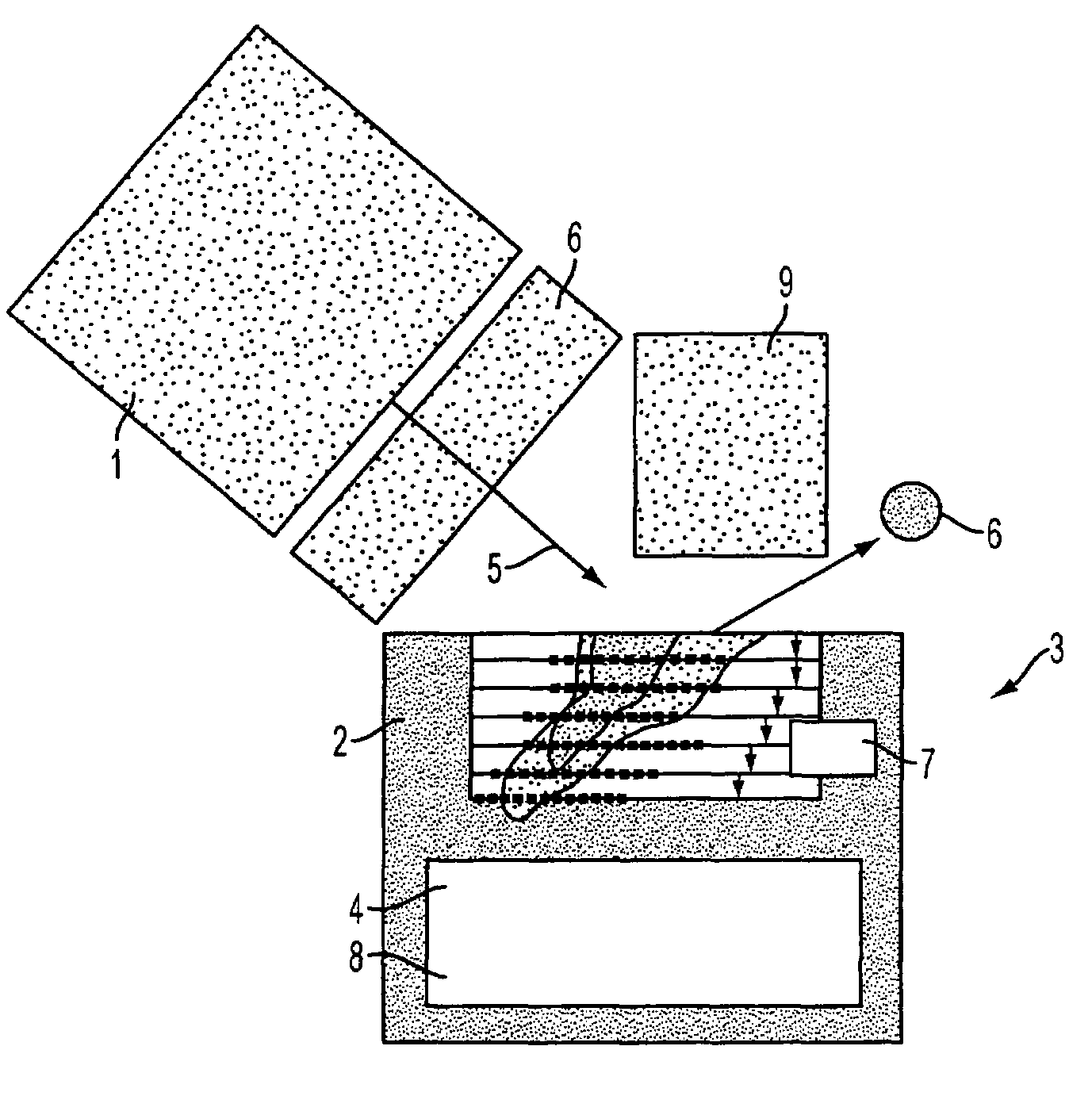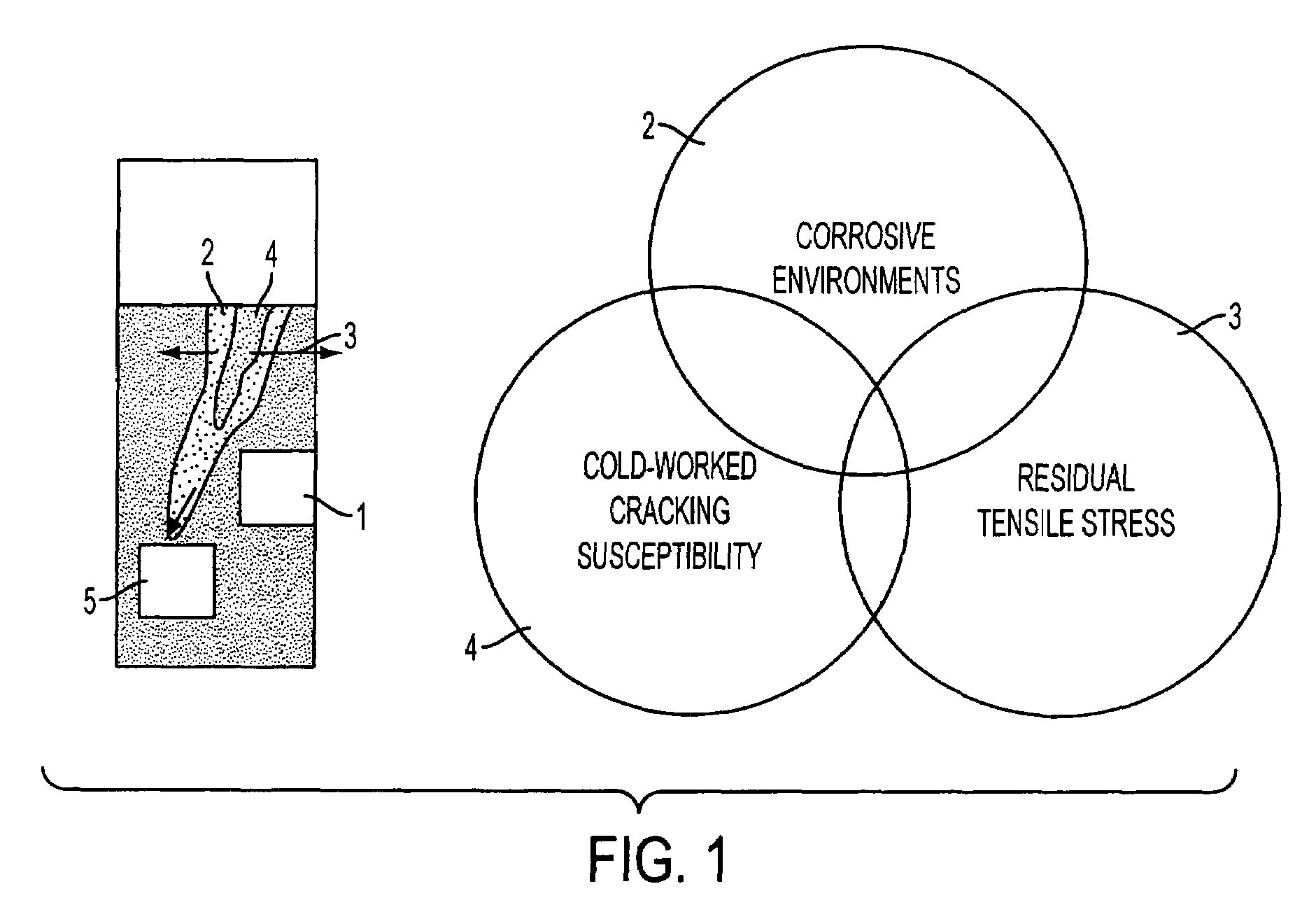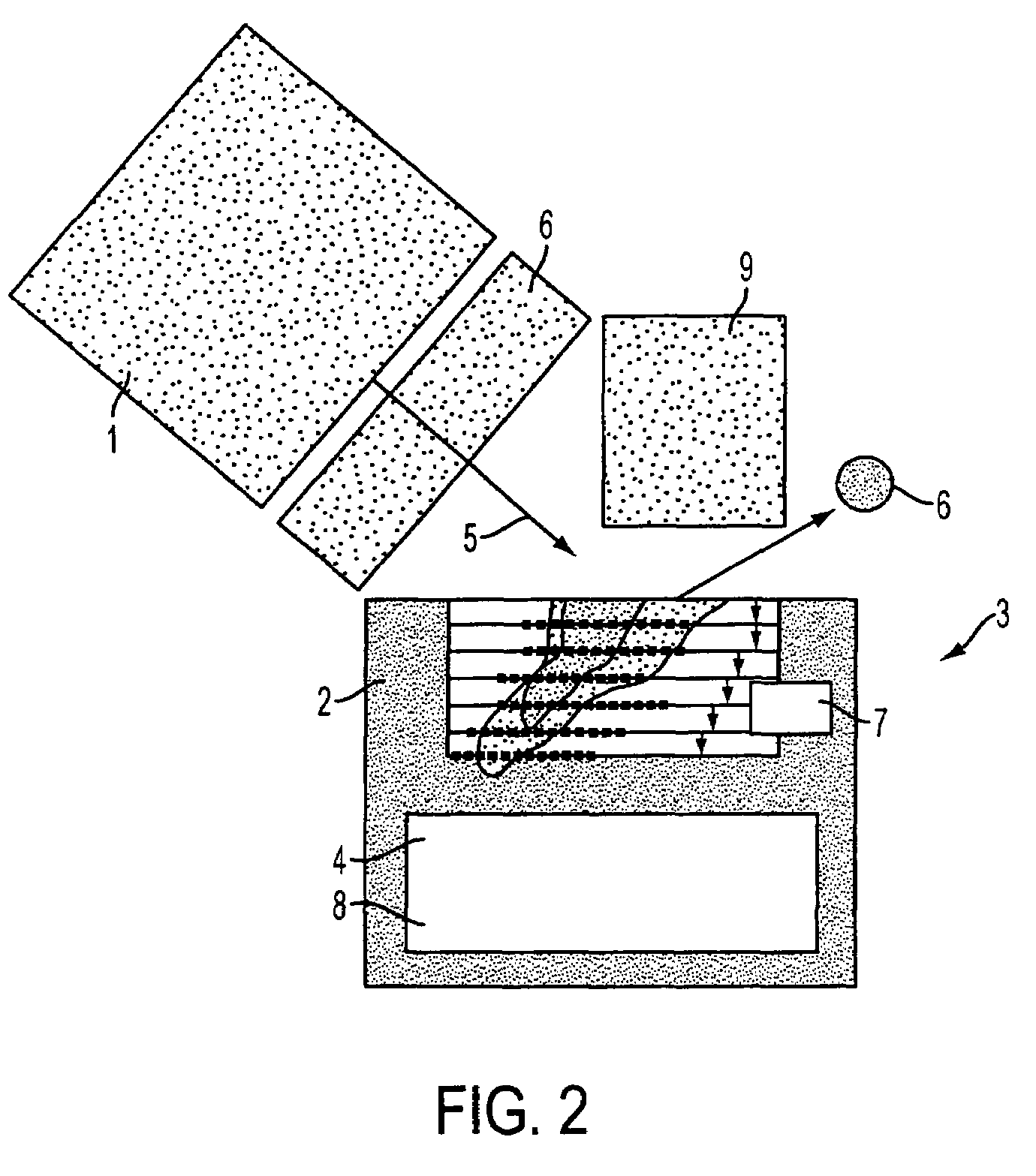Some knowledge has been obtained about the conditions under which cold-worked stress
corrosion cracking occurs but no detailed understanding has been obtained for the mechanism by which a specific type of
cracking occurs and develops.
However, this method is not applicable to specially-processed steel sections that have been forged, rolled or otherwise worked to have higher tensile strength because the required strength can not be kept after the annealing.
However, it is difficult to achieve uniform
processing by this method since the grain boundaries in the work are etched irregularly in larger area.
These methods that are intended to prevent cold-worked or otherwise
induced stress corrosion cracking have some field-proven records; however, the type of work that can be processed, the place where
processing can be done, the shape of the work, and other conditions are so rigorous that the future and current applicability of the methods is fairly limited and their effectiveness and effective periods are also limited to cause the following problems.
Ever since the beginning of recorded history, cold-worked stress corrosion cracking has put considerable limit on the performing functions and serviceable periods of many tools, machines, vehicles and structural parts made of the iron steels and alloyed steels including stainless steels, and on account the difficulty in predicting it, cold-worked stress corrosion cracking has been a cause of many cracking accidents.
Even today, cold-worked stress corrosion cracking contributes to markedly increasing the production and maintenance costs of many nuclear reactors, power plants, production facilities in heavy chemical industries, bridges, buildings made of the iron steels and alloyed steels including stainless steels, aircrafts, automobiles, railways and all other structures made from the iron steels and alloyed steels including stainless steels.
Since cold-worked stress corrosion cracking limits the performance and functions and serviceability periods of those structures and the timing of cracking is difficult to predict, this type of cracking has been a cause of many accidents.
The approach that relies upon retarding the development of corrosion by adopting strict guidelines for corrosive environments as for the pH of water and concentration of the
chlorine ingredient in it is not usually applicable at all times. Depending on the conditions of the apparatus, the method is not usually applicable in many cases.
The approach which performs annealing to elevate the temperature of all or part of the work so that residual tensile stress is substantially eliminated throughout the work
ranging from the surfaces to the interior is difficult to apply to large or complex shapes; it is not applicable at all if the object has thermally vulnerable parts or areas; it is also difficult to apply on-site to parts or apparatuses that require high rigidity or strength.
Thus, the approach under consideration cannot always be adopted and more often than not it is generally unsuitable for use.
The approach in which selected or all surfaces of the work are impacted by steel balls or other shaped shots which are projected at high speed in a generally vertical direction and by the resulting compressive force, the residual tensile stress on the horizontal surface is converted to residual compression, is not applicable in all cases and the effect lasts for only a short peroid, thus requiring repeated
processing.
In addition, it often occurs that interference by nearby equipment precludes application of the approach.
As a further problem, scattering steel balls or other shaped shots often impairs the integrity of equipment, making the approach unsuitable for use in circumstances where they are difficult to recover.
The approach in which high-power
laser light is applied to selected or all surfaces of the work in water in a generally vertical direction so that they are impacted by the extinguishing
pulse pressure of bubbles that form on the surface, and by the resulting compressive force, the residual tensile stress on the horizontal surface is converted to residual compression, is difficult to apply to very large structures, miniature structures and complex shapes; it is impossible to apply if the work has parts or areas that cannot be put into water; it is also difficult to apply in places that dislike the use of water.
Thus, the approach under consideration cannot always be adopted and more often than not it is generally unsuitable for use.
The approach in which a high-speed
water jet is propelled to selected or all surfaces of the work in water in a generally vertical direction so that they are impacted by the extinguishing
pulse pressure of the
cavitation that develops on the surface, and by the resulting compressive force, the residual tensile stress on the horizontal surface is converted to residual compression, is difficult to apply to very large structures, miniature structures and complex shapes; it is impossible to apply if the work has parts or areas that cannot be put into water; it is also difficult to apply in places that dislike the use of water.
Thus, the approach under consideration cannot always be adopted and more often than not it is generally unsuitable for use.
However, these methods are difficult to apply to very large structures, miniature structures and complex shapes; they cannot be applied if the object has parts or areas that are vulnerable to acidic corrosive chemicals; they are also difficult to apply on-site.
Thus, the methods under consideration cannot always be adopted and more often than not they are generally unsuitable for use.
Speaking of the method which manufactures a work from a specially designed material such as one in which stress corrosion cracking will not easily develop, or one which has been rendered less sensitive to stress corrosion cracking, or one in which stress corrosion cracking will not easily develop, no such materials have been developed and many iron steels and alloyed steels including stainless steels still remain unsuitable for use, so it is impossible to apply the method in almost all cases.
The few developed,
new materials are so expensive that the method is not applicable in all cases for economic and other reasons.
More often than not the method is generally unsuitable for use.
 Login to View More
Login to View More 


